Chapter 4
Fibre Posts
Aim
To describe the types of fibre post which are available and their clinical indications.
Outcome
At the end of this chapter, the reader should be knowledgeable on the properties of fibre posts, and should have sufficient knowledge to be able to cement a fibre post and to build up a composite core.
Introduction
Root canal treated teeth are regarded generally as susceptible to fracture, but the idea of tooth reinforcement by means of the insertion of a post has been heavily criticised. Armed with this knowledge and concerned that post placement may carry other risks such as root perforation, many practitioners have tended to avoid the use of posts wherever possible. If, however, the remaining tooth structure is not sufficient to support a core, the use of a post is the only alternative if a reliable restoration is to be placed, and tooth loss avoided.
The properties of a post-core reconstruction become all the more important as residual tooth structure decreases. Some desirable features of post-core materials include:
-
adequate compressive strength to bear functional loading
-
a modulus of elasticity to allow some movement in response to functional and parafunctional loading, but without debonding from the tooth or excessive stresses being generated within the restored tooth
-
ease of manipulation
-
ability to bond to the remaining tooth structure
-
resistance to leakage of oral fluids at the core–tooth interface
-
thermal coefficient of expansion and contraction similar to tooth structures
-
minimal potential for water absorption
-
inhibition of dental caries.
Fibre posts were introduced to the market in 1990, with the aim of providing more elastic support to the core, compared to that provided by metal posts. The reduced stress transfer to the tooth structure was claimed to reduce the likelihood of root fracture.
Fibre Posts
The first fibre posts were made from carbon fibres, which were arranged longitudinally and embedded in an epoxy resin matrix. Black carbon fibres were rapidly replaced by more aesthetic white and translucent quartz and glass fibres (Fig 4-1) which are now the standard components of fibre posts.
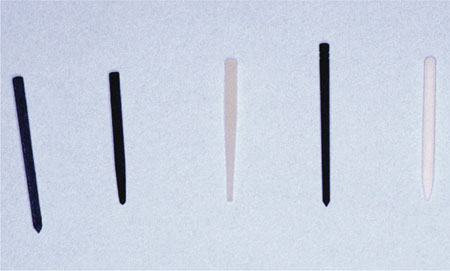
Fig 4-1 (a) Some of the oldest types of fibre posts. From left to right: Aestheti-Plus (quartz fibres, RTD), Endo-Composipost (carbon fibre, RTD), Fiber white (silica fibres, Carbotech), Carbotech (carbon fibres, Carbotech).
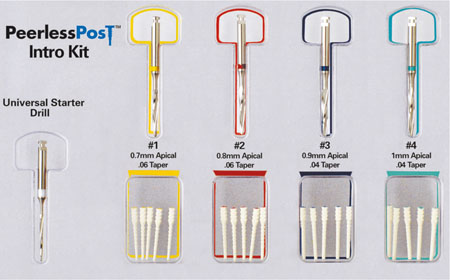
Fig 4-1 (b) Glass fibre post featuring retentive grooves for the retention of the composite (Peerless posts, Sybron Endo).
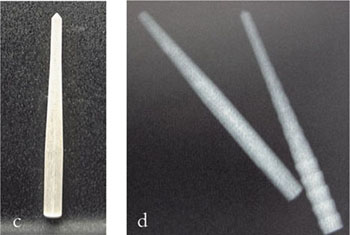
Fig 4-1 (c) Translucent quartz fibre post (DT Light Post, RTD). (d) Radiographic image of glass fibre posts showing an acceptable level of radiopacity.
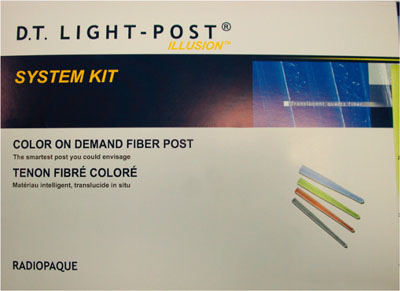
Fig 4-1 (e) The new DT Light Post Illusion (RTD): these posts are colour coded and become translucent at body temperature.
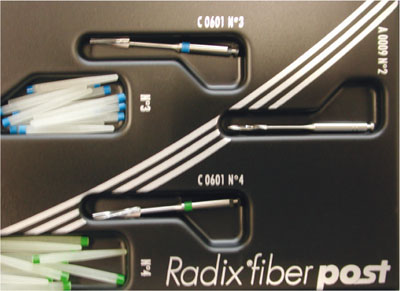
Fig 4-1 (f) The new Radix fibre post (Dentsply Maillefer).
Mechanical Properties
The mechanical properties of carbon fibre posts were viewed favourably in many laboratory and clinical studies. The performance of quartz and glass-fibre containing posts has led, however, to carbon fibre posts being abandoned.
The flexural strength and the modulus of elasticity of fibre posts were claimed initially to be very close to those of dentine. In fact, fibre posts have a modulus of elasticity that is lower than that of metal posts, but still three to four times higher than that of dentine.
A key difference between fibre and metal posts is that fibre posts lose much of their flexural strength if they are submitted to cyclic loading in a wet environment or to thermocycling. This is related to degradation of the resin matrix in which the fibres are embedded. The failure mode of fibre-post restored teeth is not normally root fracture, as is often the case with metal posts, but decementation, which may be associated with marginal leakage and the development of secondary caries.
Adhesion to Composite
The adhesion of the fibre post to composite, as used in a core build-up, is mostly micromechanical, with irregularities on the surface of the post providing retention for the bonding resin (Fig 4-2). Recent work has suggested that silanisation of the post surface may increase the retention of the composite core and adhesion with the luting cement.
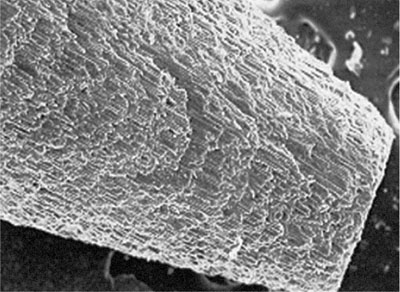
Fig 4-2 (a) SEM image of a fibre post, revealing the roughness that ensures micromechanical bonding to the composite cement.
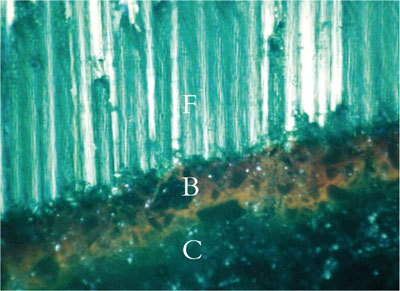
Fig 4-2 (b) Confocal microscopic image showing good adaptation of the bonding system and composite to the post surface: F, fibre post; B, bonding agent; C, composite.
Clinical Studies
The clinical evidence supporting the use of fibre posts is abundant and largely superior to that supporting the use of metal posts. At present, no systematic review of randomised clinical studies is available on the restoration of root canal treated teeth using posts.
The vast majority of prospective studies on fibre posts report failure rates in the region of 2 to 5% after 2–5 years of clinical service. Most of the cases reported to have failed did so because of post decementation, chipp/>
Stay updated, free dental videos. Join our Telegram channel

VIDEdental - Online dental courses


